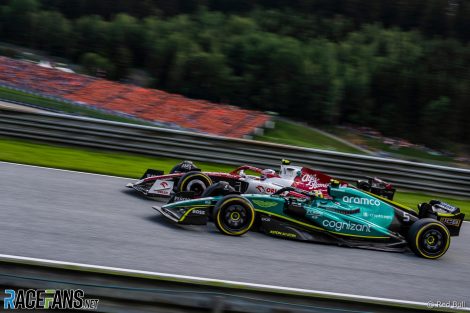Formula 1 underwent one of the biggest technical revolutions it has ever seen at the start of the 2022 season, with the focus entirely on improving racing by making cars easier to follow than ever before.
Many critics were sceptical we would see much change in the on-track action. After being banned in the 1980s, ground effect cars were back in F1, with the sport’s bosses keen to see closer wheel-to-wheel racing. Yet as the sport enjoys some summer respite but the return to racing looms on the horizon, have the change in regulations achieved their targets so far?
Max Verstappen and Red Bull ended the first leg of the championship on a high and, with it, grabbed an 80-point lead over Ferrari and Charles Leclerc in the standings. Such is his lead, the Dutchman can now finish second to Leclerc at every race, including the final sprint race of the season in Brazil – albeit with some technicalities – and still win the title for the second season in a row.
Yet despite one driver holding a hefty lead on paper, it’s fair to say we’ve seen some exciting races across the season so far – a sign that perhaps the new changes have indeed been working. Even Lewis Hamilton hailed the British Grand Prix at Silverstone, which saw six more overtakes in 2022 than the previous year, as “reminiscent of the karting days.”
The aerodynamic changes also saw a new front-wing shape, as well as alterations to the rear, with 13-inch tyres scrapped in favour of bigger 18-inches – all designed to make cars race closer and, in theory, easier to follow. However, some tracks are proving easier than others, which is unsurprising due to the nature of the sport.
So far in 2022 – across 13 grands prix and two sprint races – we have seen roughly 450 on-track overtakes after the opening lap where the pass resulted in a position change at the end of the lap. The Austrian Grand Prix saw 53 overtakes in 2022 over the 71 laps, which was more than the combined total of both races at the Red Bull Ring in 2021, which was roughly 50 – 23 for the Styrian Grand Prix and 27 at the Austrian Grand Prix. To go back further to the 2020 season, there were 22 passes during the Austrian Grand Prix, then 45 overtakes at the Styrian Grand Prix a week later. Yet the impact of the new technical regulations has still divided the paddock.
“The new rules? Yeah, I think they seem to be working,” came the assessment of Haas team principal Guenther…
Click Here to Read the Full Original Article at RaceFans…

